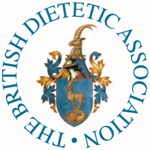Simple Steps to Reduce your Salt Intake
The British Dietetic Association (BDA) is issuing some easy to understand facts and tips for consumers to take advantage of to coincide with Salt Awareness Week 26th March and 1st April 2012.
Surprisingly, about 75% of our salt intake comes from salt already added to food we eat, such as meat products, ready meals, soups, pasta sauces, bread and some breakfast cereals.
The recommended daily salt intake is just 6g (less for children) but, on average, we consume around 8.6g (about 2 teaspoons). This comes from the salt we use in cooking as well as the salt we add at the table.
To cut back on the amount of salt we consume we can take some simple steps such as trying to use little or no salt in cooking and try not to add extra salt at the table. In fact, leave the salt off the dinner table all together.
Further reductions can be made by cutting right back on salty processed foods and ready meals and try and make your own if you can.
Always check food labels for salt and go for lower salt choices. There can be a big difference between different brands sometimes.
When dining out it is OK to ask in restaurants and take-away outlets for no salt.
Food Containing Salt
- Salty meats and meat products such as ham, bacon, sausages, pate and salami
- Canned, packet and instant soups
- Ketchup, soy sauce, mayo and pickles
- Stock cubes, gravy powder and salted flavourings
- Any canned food containing salt
- Smoked meat and fish, prawns and anchovies
- Meat and yeast extracts
- Cheese
- Salted snacks, salted nuts, salted biscuits and popcorn
- High salt ready meals, sauces and take-away meals like pizza, Chinese and Indian
- Pasta sauces
- Sandwiches
- Bread and breakfast cereals (these are an important part of a healthy diet and bread and some cereals contain salt, so check and compare labels before making your choice)
Let's Be Practical
When looking at food labels, an easy guide is:
- High in Salt = more than 1.5g of salt per 100g (or 0.6g of sodium)
- Medium in Salt = between 0.3g (0.1g sodium) and 1.5g (0.6g sodium) of salt per 100g
- Low in Salt = 0.3g or less of salt per 100g
Salt is Sodium Chloride and food labels often list both so to convert salt to sodium = divide by 2.5 and to convert sodium to salt = multiply by 2.5.
Eating too much salt can increase your risk of developing high blood pressure.
Having high blood pressure is a major risk factor for both heart disease and stroke. By reducing your salt intake it is possible to reduce this risk, so it’s well worth doing.A lot of everyday foods are not obviously salty, but do contain high amounts of 'hidden salt'. It's easier to make healthier food choices if you are able to quickly check salt content on food labels.
Switching to a lower salt choice of a food, particularly if you eat it a lot or in large portions, can make a big difference to your daily salt intake. Reducing your intake of salty foods in an important part of a healthy diet.
The British Dietetic Association
www.bda.uk.com
